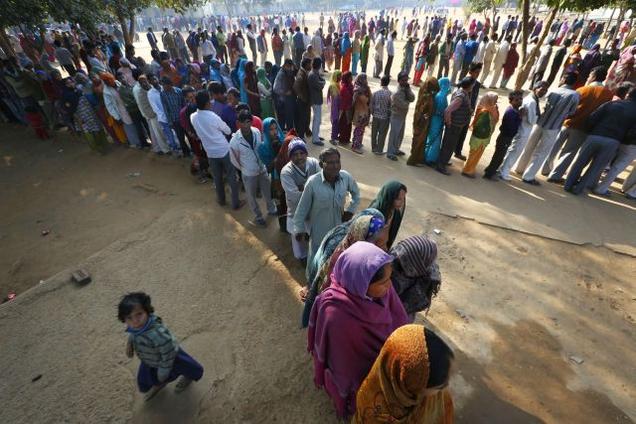Janaagraha conducted the exercise based on the October 15, 2014 electoral roll.
One-third of the people on Delhi’s voter list had moved house, were dead or could not be found, a sample survey has revealed. The findings raise serious questions about the accuracy of the information in Delhi’s voter lists and put in doubt official voter turnout numbers, the researchers said, but were refuted by the Election Commission.
Janaagraha Centre for Citizenship and Democracy, a Bangalore-based citizen engagement group, identified a representative sample of 3,210 Delhi voters spread across eight assembly constituencies. They then went to the addresses listed for these voters and attempted to find them. 21 per cent had moved house, the current occupant of the house informed the surveyors. Another one per cent was either dead, a repeated name or as in the case of two voters, in prison. Another 11 per cent could simply not be located despite three attempts. In all, 33 per cent of the sampled voters surveyed was not at the listed location and could potentially be deleted, the researchers found.
“There are two main implications of what we’ve found,” Srikanth Viswanathan, coordinator of advocacy, research and capacity building at Janaagraha, said. “One it exposes the system to the risk of bogus voting. The second is that it raises questions about the legitimacy of electoral outcomes; the margins of victory in these constituencies in the last elections were lower than the numbers of missing voters,” he said.
Janaagraha conducted this exercise based on the October 15, 2014 electoral roll. When the Election Commission revised its electoral rolls on January 5 this year, it was able to track how many of the problems it had identified were spotted by the ECI as well. They found that just 2.4 per cent of names of people who had shifted or could not be found were deleted from that constituency. In addition, seven per cent of Janaagraha’s sample had errors in the details, but just less than one per cent of these were fixed by the summary revision.
“The electoral roll was continuously updated from January 5 to January 21. So I cannot comment on findings based on old data,” Delhi’s chief electoral officer Chandra Bhushan Kumar told The Hindu. However, Mr. Kumar could not share data for how many names the ECI had altered or deleted between January 5 and 21.
Among assembly constituencies, Gandhi Nagar in the east had the highest rate of missing voters, with just half of the sample for that constituency found at the listed location and with no errors. Rohini did the best; just 9 per cent of people had shifted out, and another 7 per cent of addresses could not be found.
Officials in the state Election Commission did not immediately comment on Janaagraha’s findings. However, the organisation has found that the extent of error has likely increased between the last election and this one; “New names are being added but old ones are not being deleted,” Mr. Viswanathan said.
“This is particularly a problem in urban areas, where there is a high rate of inter and intra-city migration,” Maj Gen (retd) K R Prasad, coordinator of Janaa Roots, said. “Moreover as urbanisation grows, this problem is only going to increase,” he added.








